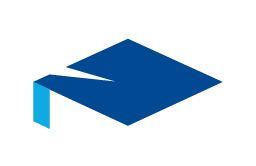The Graduating European Dentist (GED) Framework defines shared expectations for dental graduates across Europe, focusing on professionalism, clinical competence, patient care, societal responsibility, and research.
Developed collaboratively, it supports educators in delivering consistent, high-quality curricula while allowing flexibility for local adaptation. The Framework is aspirational rather than prescriptive, guiding institutions, students, and regulators toward excellence in dental education.
What is the GED framework?
The Graduating European Dentist (GED) Framework sets out the aspirational expectations for dental students graduating across Europe. At present this is presented as a series of behaviour-based learning outcomes set across 5 domains:
- Professionalism
- Safe and Effective clinical practice
- Patient centred care
- Dentistry and Society
- Research
The intention is that the Framework will support educators to deliver a comprehensive, measured curriculum which meets the needs of its stakeholders.
It is important to note that the Framework is not an exhaustive curriculum. The Framework makes reference (particularly in Domain 3) to externally published curricula - and these can be explored in the GED curriculum library - and should supplement the learning outcomes already stated.
Key milestones in its evolution
-
2004
Profile and Competences for the European Dentist.
DOI: 10.1111/j.1600-0579.2005.00369.x -
2009
Profile and Competences for the European Dentist – Update 2009
DOI: 10.1111/j.1600-0579.2009.00609.x -
2015
GED Taskforce established to renew the curriculum documents.
-
2017
The Graduating European Dentist: A New Undergraduate Curriculum Framework published within a special edition of the EJDE.
DOI: 10.1111/eje.12307
PMID: 29205782 -
2020
Digital version of the GED curriculum launched on the ADEE website.
-
2024
Domain V: Research added to better reflect the needs of graduating dentists.
DOI: 10.1111/eje.13040 -
2025
The successes of the GED framework over the past 7 years captured in an EJDE article.
DOI: 10.1111/eje.13058 -
2025
Dublin stakeholder event with 50+ participants exploring OHP education challenges and priorities.
DOI: 10.1111/eje.70028 -
2026
Visit our updates section to stay up to date with the next steps.
How was the most recent iteration developed?
The framework was designed to be grounded in the co-creation model through consultation, consensus, collaboration and collegial learning. New domains were established which better-reflected the knowledge, skills and attitudes required of modern graduating dentists.
In 2017, the taskforce undertook a curriculum ideology inventory, to ensure that the curriculum approach was sound, and considered the needs of both educators and the students themselves.
The process saw an emphasis on elements such as:
- patient safety
- working as a team
- patient‐centred care
- quality assurance
- teaching excellence and student satisfaction
- student preparedness and support
In 2023 the taskforce considered additional and updated learning outcomes in relation to Environmental Sustainability and Research.
To request a change or to understand the process for enacting a change, please visit the “Changes and Updates“ section.
Advice on how the GED Framework should be used
The GED Framework sets out behaviour-based learning outcomes for the European dental graduate. These are largely centred around papering graduates for safe work as a dentist.
The Framework should be considered aspirational rather than a prescriptive standard, intended to support local educational and regulatory practices, while recognising the unique contextual factors of each local institution. The Framework allows flexibility in local decision-making, enabling institutions and agencies to define or adapt characteristics most relevant to their context. It does not prescribe a specific curriculum structure or assessment method, nor do updates imply that existing national or institutional curricula must be changed.
For Universities or Institutions
ADEE expects that the primary use of the Framework will be in supporting institutions to develop and benchmark their own local curricula
Some schools may wish to map their local curricula to the GED Framework as a way of demonstrating that they meet a particular benchmark. Mapping undergraduate programme learning outcomes to the GED framework is voluntary and can be achieved through a variety of approaches and models. Some schools may also wish to make their learning outcomes (and in turn, the way in which they map to the Framework) available to students – either for them to explore the curriculum, or to map learning or reflections – or both.
ADEE recommends the use of MOLAR software (in development) to facilitate this mapping process, supporting structured alignment and documentation.
For prospective or current students
The open nature of the resources means that prospective or current students are able to explore the GED Framework in order to better understand the programmes on which they are expecting to, or are currently studying
For Quality Assurance Agencies and Regulators
Each agency retains autonomy in defining and applying standards that best serve its objectives. The Federation of European Dental Competent Authorities and Regulators (FEDCAR), in November 2023, endorsed the use of the GED curriculum nationally to its European members, including candidate countries and as such, the GED Framework may be used as a reference tool to inform accreditation or quality assurance processes, promote comparability, and guide quality enhancement initiatives across institutions.





